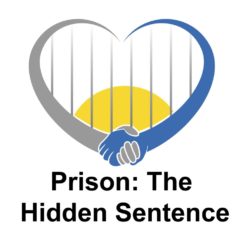Prison News Roundup

Texas incarceration rate higher than Russia and Iran
A Texas House candidate from Austin has promised to focus on youth initiatives to keep young people out of the criminal justice system, citing the high incarceration rate in Texas.
A report by the Prison Policy Initiative shows Texas with the fifth-highest incarceration rate, 1,063 per 100,000 population. Russia has 475 per 100,000; Iran has 284 per 100,000. The international incarceration rates were taken from the World Prison Population List.
Read the article at: my Statesman
***************************
Start with prisons to change the world
After Charles Colson was released from prison for a Watergate-related obstruction of justice crime, he often spent his Easter weekends going back behind bars to visit the incarcerated. He believed that no place is better to initiate cultural renewal than in the criminal justice system. His son accompanied his father on one of these visits, and writes about his father’s beliefs in a restorative criminal justice system.
Two-thirds of prisoners released each year will be re-arrested within three years. A variety of prison programs can be implemented to reduce rates of re-offense. Many people pay their debt to society, and emerge from correctional environments to make significant contributions to society. Prisons are full of untapped potential. When prisoners are transformed, they will transform the culture of their prisons and society at large.
Read the article at: Fox News
***************************
Kids today spend less time outdoors than prison inmates
Two recent articles state that inmates in the United States are guaranteed two hours of outdoor time daily, but one in two children spends less than an hour outside each day. A recent survey of 12,000 parents in 10 countries, with children aged 5 to 12, found that one-third of the kids spend less than 30 minutes outside each day.
Inmates at a maximum security facility in Indiana describe their daily outdoors time as “probably the most important part of my day” and an opportunity to “take all the frustration and all your problems and just leave them out there…” When inmates are told that many children spend less time outdoors than they do, one responded, “Wow, that is really depressing.”
Laundry brands in the UK have launched a campaign called “Dirt is Good – Free the Children” to promote the idea that kids should spend time in free play outdoors, using their imaginations and getting dirty.
Read the entire article at: treehugger
and Valdosata Today (On this site, click on “ABC 7 – Buffalo” for a brief video and article)
*************************
Facing an aging prison population
Some Missouri prisons have set up enhanced-care units to help serve an aging prison population. In some cases people in prison are learning health-care skills by helping take care of each other. Most prisons aren’t equipped to deal with the conditions common in the elderly, such as diabetes, cardiac disease and dementia.
An early release program for elderly prisoners isn’t always the answer because they often don’t have anywhere else to go. When the mentally ill were released from state hospitals, they had nowhere to go, and often ended up in homeless shelters or in prison. Every state is dealing with aging prison populations, and Missouri deserves credit for what’s been done so far.
Read the article at: Ozarks First
***************************
Imprisoned mothers should spend six months with their newborns
A report regarding incarcerated Washington, D.C. women says that incarcerated mothers should be allowed to live with their newborn babies for at least six months.
In some facilities, women who give birth are separated from their child almost immediately. Incarcerated women have problems maintaining contact with their children. The report cites research showing that prison nursery programs increase attachment between mother and child, and decrease recidivism rates.
Read the article at: ABA Journal
******************************
You did the crime, now do the time
In Minnesota, there are more state prison inmates than there are beds in state prisons, so they are having to board inmates in county jail facilities. County jails are meant only for temporary housing, whereas state prisons are set up for long-term stays.
Some inmates have complained about losing the help they needed when moved from state prison to the county jail. Do inmates have the right to complain about losing the rights first granted to them when sentenced? Do they lose the rights to amenities when they’re convicted of a crime?
Read the article at: Mille Lacs Messenger
*******************************
Inmates with contraband cell phones
Inmates use contraband cell phones to stay connected with their former criminal lives by communicating with people excluded from prison approved communication lists. They can plan escapes, threaten witnesses, and orchestrate drug transactions.
But without cell phones, an inmate’s only option is a prison phone. Phone calls placed on authorized prison phones are monitored and recorded. But prison phones are not free and some families of inmates cannot afford the phone call fees. Some inmates face losing all contact with loved ones during a prison sentence. Allowing inmates to maintain contact with friends and family outside is important, as they will aid their transition back into society.
Read the article at: WBRC Fox 6 News
***********************
Inmates learn braille to help the blind
In a Macon, Georgia prison, some inmates are learning a new trade which can help thousands of the state’s visually impaired population. Inmates spend four days a week learning, transcribing and applying braille to help create textbooks for children who are blind. It takes at least 6 months to become certified in braille, and gives them a new trade when they are released.
An inmate said it taught him patience, temperance and a greater work ethic. The program director states “We have found that if they can be gainfully employed on the outside, it keeps them, most of them, from coming back to prison.
Read the article at: 41NBC
*****************************
Prison inmates learn skills to ready for life on the outside
In Australia’s Darwin Correctional Center, more than 50 prisoners have graduated from certificate courses. One prisoner said before prison all he knew was how to sell drugs. He was grateful to have the opportunity to learn skills that would help him find a job when released from prison for drug charges. “We’ve made the wrong decisions in life, now we’ve got the opportunity to make the right ones.
The inmates still have to earn the right to get a job, this is not a free ride for them. Everybody doesn’t start on a level playing field, so this is about leveling the field.
Read the article at: Northern Territory
Ending mass incarceration in the US
A Northwestern University professor is investigating why some states are experimenting with prison reform and how these efforts might help reverse mass incarceration. California, Texas and Georgia are all making efforts to save money by sending fewer people to prison and investing in rehabilitative programs to reduce recidivism.
More research is needed into the implementation of these reforms, the measurement of their effects on criminal punishment, and on the collateral consequences for families and communities.
Read the entire article at: Northwestern
*********************
Maine prisons reverse policy on communication with outside world
The Maine Department of Corrections has revised its inmate discipline policy, particularly regarding communications with the outside world. While some people opposed the policy, inmates will be allowed to post comments on social network sites, correspond with pen pals and publish articles under a byline. The new policy will be available on several state websites.
Read the entire article at: Bangor Daily News
*********************
Delaware Department of Correction on prison inmate healthcare
Improvements are being made to the state’s corrections systems, to focus on medical treatments for prisoners. While there are budget concerns, inmates must receive medical care, including substance abuse treatment and mental health attention. These issues are important, as
… almost everyone in prison is someday going to come back to the community…
Read the entire article at: the Review
*********************
Wisconsin to challenge FCC inmate phone call rate cap
Several states are challenging a Federal Communications Commission rule that limits the amount prisons can charge inmates for phone calls. While the FCC says that increased contact between inmates and their family can reduce their chances of reoffending, some sheriffs say the rate limits are too low to cover security-related costs for inmate calling systems.
While the FCC prefers to rely on competition and market forces to discipline prices, the inmate calling system market is a prime example of market failure, as some operate as unchecked monopolies. High call charges can be a financial hardship for families.
Read the entire article at: Star Tribune
*********************
Using restorative justice to help end the school-to-prison pipeline
Hillary Clinton recently announced a plan to end the school-to-prison pipeline, which is fueled in large part by overly punitive school disciplinary practices that funnel students out of classrooms and into jail cells, and disproportionately impact children of color. While her proposal is fairly vague at this point, and there is no single solution, reform would include hiring social workers, educators and behavioral health specialists to help reform school discipline.
The reform philosophy of restorative justice can also be applied as part of this push. Restorative justice programs are an alternative approach that have gained some popularity across the country. They focus on understanding the root causes of misbehavior.
Restorative justice programs focus on rehabilitation instead of punishment, working to understand and address what provokes students to misbehave and teaching them how to reconcile the consequences of their actions.
Read the entire article at: Slate

Leave a Reply